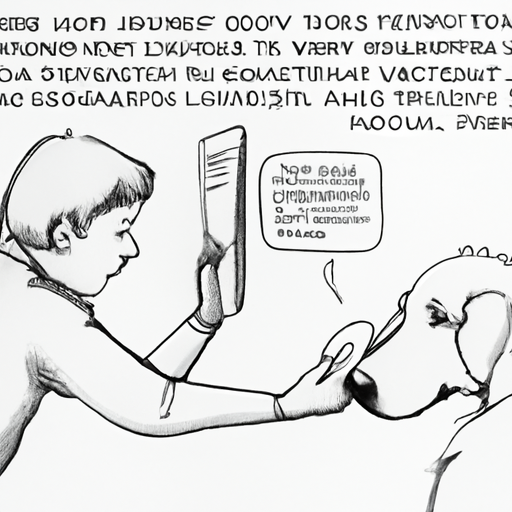If you’re a dog owner, you know the importance of keeping your furry friend healthy and happy. Part of this responsibility includes preventing common ailments like yeast infections in dogs’ ears. This condition can cause discomfort and pain for your pet and may lead to more serious issues if left untreated.
Table of Contents
- Understanding Yeast Infections in Dogs Ears
- Symptoms of Yeast Infections in Dogs Ears
- Causes of Yeast Infections in Dogs Ears
- How to Prevent Yeast Infections in Dogs Ears
- Treatment for Yeast Infections in Dogs Ears
- Frequently Asked Questions
Key Takeaways:
- Regular cleaning of your dog’s ears can help prevent yeast infections.
- Promptly addressing any underlying health conditions can reduce the risk of yeast infections.
- Consult your vet for appropriate treatment if your dog already has a yeast infection.
Understanding Yeast Infections in Dogs Ears
Yeast infections in dogs’ ears are caused by an overgrowth of yeast, a type of fungus. Dogs have a certain amount of yeast in their bodies, but an imbalance can result in an infection. This condition often affects dogs with floppy ears, such as Basset Hounds and Cocker Spaniels, as their ear structure can create a warm, moist environment where yeast can thrive.
For more information on the types of dogs prone to ear infections, check here.
Symptoms of Yeast Infections in Dogs Ears
If your dog is constantly scratching its ears, shaking its head, or shows signs of discomfort when its ears are touched, it may be dealing with a yeast infection. Other symptoms include:
- Odor in the ear
- Redness or swelling
- Dark, waxy discharge
- Crusts or scabs on the inside of the outer ear
Causes of Yeast Infections in Dogs Ears
There are several factors that can contribute to the overgrowth of yeast in your dog’s ears. These include:
- Allergies: Dogs with allergies to certain foods, dust mites, or pollen can develop yeast infections in their ears.
- Hormonal imbalances: Conditions like hypothyroidism can disrupt the natural balance of microorganisms in your dog’s body, leading to yeast overgrowth.
- Medications: Certain medications, especially those that suppress the immune system, can increase the risk of yeast infections.
- Moisture: Yeast thrives in warm, moist environments. If your dog’s ears get wet and aren’t dried properly, it can create prime conditions for a yeast infection.
For a deeper understanding of these causes, visit this link.
How to Prevent Yeast Infections in Dogs Ears
Preventing yeast infections in your dog’s ears involves regular care and monitoring your pet’s overall health. Here are some tips to help:
- Regular Cleaning: Clean your dog’s ears regularly with a vet-approved ear cleaner. This removes debris and excess wax that could create an environment for yeast to grow.
- Dry Ears Thoroughly: After bathing your dog or any water activities, make sure to dry its ears thoroughly.
- Proper Diet: Feed your dog a balanced diet to boost its immune system and prevent conditions that could encourage yeast growth.
- Check for Allergies: If your dog has allergies, work with your vet to manage them and prevent secondary yeast infections.
- Regular Vet Checks: Regular vet check-ups can help identify any underlying conditions that might lead to yeast infections.
The following table shows a summary of these preventative measures:
| Preventative Measures | Description |
|---|---|
| Regular Cleaning | Use a vet-approved ear cleaner |
| Dry Ears Thoroughly | Especially after water activities |
| Proper Diet | A balanced diet boosts the immune system |
| Check for Allergies | Manage allergies with your vet |
| Regular Vet Checks | Identify underlying conditions |
Treatment for Yeast Infections in Dogs Ears
If your dog does develop a yeast infection, it’s important to get treatment immediately to prevent the condition from worsening. Treatment usually involves antifungal medication, either in the form of drops, tablets, or injections. Your vet might also recommend a special ear cleaner or medicated shampoo to help manage the condition. For a detailed guide on treating ear infections, consider this article.
Frequently Asked Questions
Q: Can a yeast infection in a dog’s ear clear up by itself?
No, a yeast infection in a dog’s ear will not clear up without treatment. If you suspect your dog has a yeast infection, consult your vet immediately.
Q: Can a yeast infection in a dog’s ear spread to humans?
While the specific strains of yeast that affect dogs do not typically infect humans, it’s always a good idea to wash your hands after treating your dog’s yeast infection.
Q: How often should I clean my dog’s ears to prevent yeast infections?
Typically, it’s recommended to clean your dog’s ears once a week. However, the frequency might change depending on your pet’s breed, lifestyle, or health conditions.
Remember, prevention is always better than cure, and by following these steps, you can help ensure your furry friend stays free from uncomfortable yeast infections in their ears.



